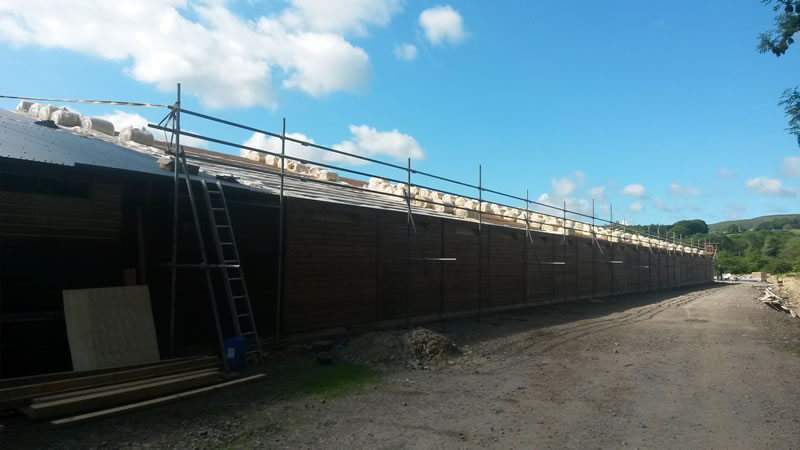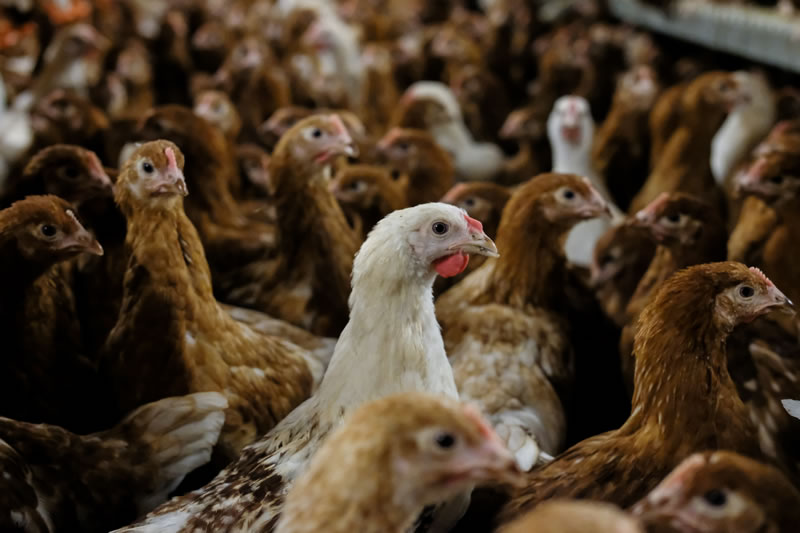
New egg production units in Wales face tighter controls over ammonia emissions in future in response to a big increase in poultry numbers.
All farms across the United Kingdom will have to comply with new European Union limits on ammonia emissions, which are being introduced over the next four years, but Welsh authorities are also implementing stricter planning controls on ammonia. National Resources Wales (NRW), which is involved in regulating poultry units, says the new controls are a response to what it says has been a "massive expansion of poultry numbers in many parts of Wales."
NRW senior adviser Jeremy Walters told the Ranger that the big increase in bird numbers and the ammonia they produced could pose a threat to certain plant life and bio-diversity unless controls were put in place.

"Certain types of habitat, certain types of plants and animals are sensitive to ammonia," he said. The critical level for particularly sensitive plants such as bryophytes, lichens and most mires was one microgramme per metre cubed; for grasslands and other vegetation three microgrammes per metre cubed, he said.
Historically, farmers applying for permission for a new unit had been allowed to use percentages of this critical level as screening thresholds under which detailed modelling was not required and permits could be issued. This had been done to reduce the number of assessments needed and to keep the costs of permitting down, but it was now felt that this was not providing enough protection for the environment.
"What we have seen happen is that you would have a lot of farms in one area - an expansion of the industry in one area, either for eggs or broilers - and each farm would screen out using this screening level. But the combination of all those farms would see an exceedence of the critical level. So you would see plants of a certain type dying off and you would have a loss of bio-diversity in that area," said Jeremy Walters.
NRW says certain areas of Wales have experienced a huge increase in poultry numbers in recent years. In Powys it has been consulted about more than 300 applications since 2010. Pressure groups and concerned individuals have been raising concerns about the impact of new poultry developments on ammonia levels, it says
“Intensive livestock units emit ammonia gas, which is toxic to sensitive plants and habitats and can cause significant damage close to farms," said Jeremy Walters. "While ammonia emissions have stabilised across the UK as a whole, they have increased significantly in Wales since 2008.
"It’s our job to protect these valuable habitats so we’ve worked closely with UK agencies to look at the impacts of air pollution from livestock units." He said, "We were getting a huge amount of applications in and we were applying this blanket approach to the whole of the industry no matter where the farms were located. That wasn't protecting the environment, so what we have done is reduced screening thresholds." He said, "We reduced the air quality thresholds that underpin our permitting role and support our advice on planning applications."
Jeremy said, "It's not a stop. All it means is that because it hasn't screened out you need to look in more detail at your surroundings. You need to look at what habitat is going to be affected by the farm in that place and do some detailed air quality modelling to show you are not going to have an adverse effect. If you can do that, you will get your permit. If you can't do that and the emissions are going to result in bio-diversity loss then we say, 'Look, you need to look at this again, you need to change the design of your proposal, maybe put in some abatement like scrubbers that collect the emissions from the shed, that scrub out the ammonia before it is released.' That can reduce the emissions down to enable it go ahead."
He said, "There will be some areas and some types of farms that won't be able to operate in a certain area because of the sensitivity of the local environment and the design of the sheds. If you change the design of the sheds then, in all likelihood, depending on how much you change it and how much you've scrubbed, you are likely to get your permit."
He said the new thresholds would only apply to new applications, not existing operations, and he said they were not designed to prohibit development. "The changes are designed to ensure we take a site specific approach, ensuring the local environment is protected. The new thresholds were derived between several agencies and have been independently peer reviewed.
"The industry already operates successfully and profitably under similar or more stringent environmental limits in a number of EU countries. We want to encourage a sustainable intensive farming sector," he said.
Despite the assurance, NFU Cymru has raised its concern about the changes. A spokesman told the Ranger, “NFU Cymru has met with Natural Resources Wales to understand the evidence behind the changes to the emissions guidance introduced in April 2017. NFU Cymru is concerned about the changes to guidance and the impact that they could have on farming in Wales – most notably farmers’ ability to develop a range of income streams and meet consumer demand for high quality Welsh produce,” he said.
